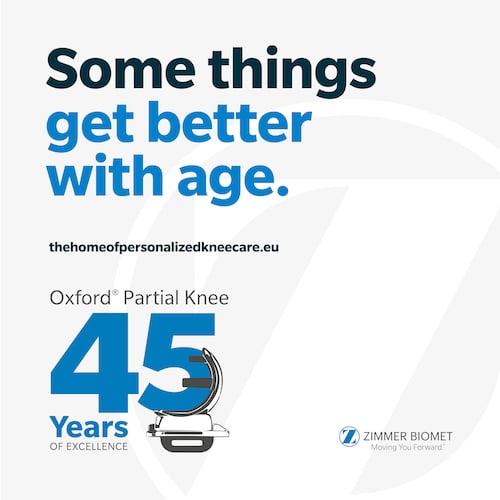The next most common reason for revision was patellofemoral problems (50%), while nearly 60% of patients were found to have multiple causes for failure1.
TKR is the treatment of choice for advanced multi-compartmental OA, but 10-30% of patients report ongoing pain and dissatisfaction, often resulting in revision surgery1,2 . The burden of revision TKR is increasing in many countries, and the rate of revision in national joint registries now ranges from 3 to 12%, depending on the observation period and the criteria for a ‘revision’ TKR being applied1.
Most literature on the causes of revision TKR has been based on national registry data. Often this analysis is limited to a single cause per revision, and employs no standardised methodology for accurately diagnosing the cause of failure1. “This impedes the careful identification or exclusion of all possible failure modes1.”
The objective of this study was to assess the most common reasons for primary TKR failures in a large single-centre series using a published, standardised diagnostic algorithm1. Data from a specialised knee centre was collected prospectively for patients presenting with persistent post-TKR pain between 2015 and 2020. Revision was defined as a “secondary surgical procedure…where by the complete primary implant or parts thereof are replaced by new components1.”
The failure categories used were:
- Aseptic loosening
- Peri-prosthetic infection
- Instability
- Wear/osteolysis
- Arthrofibrosis/stiffness
- Malalignment
- Patellofemoral problems and/or extensor mechanism insufficiency
- Peri-prosthetic fracture
- Irritation of ITB
- Others
Where more than one cause of failure was observed all causes were recorded.
The mean time to revision TKR was 3.6 years. 98/49% were performed within the first 2 years of the index surgery. 102/51% occurred later than 2 years from the primary procedure1.
Being a knee centre specialising in painful TKR, most patients (86%) came via tertiary referrals from other centres/surgeons. A total of 87 different surgeons performed the primary TKRs making up the cohort for this study1.
As well as the most common failure modes, the authors also explored any correlation between the failure modes. Interestingly, they observed a strong positive correlation between patellofemoral problems/extensor mechanism insufficiency and malalignment (p < 0.01) and wear/osteolysis and ‘unexplained’ pain (p < 0.01) 1.
The findings that instability and patellofemoral problems were the most common causes for revision differ from the findings of previous literature1. The authors were not surprised by this observation because the majority of the revisions in this instance were tertiary referrals to a centre specialising in painful TKR. They concluded that: “due to the standardised diagnostics following a validated algorithm for painful patients after TKR in the setting of a knee centre, it is likely that the identified failure modes might differ from those based on registries and studies carried out in less specialised institutions1.”

